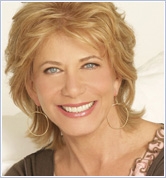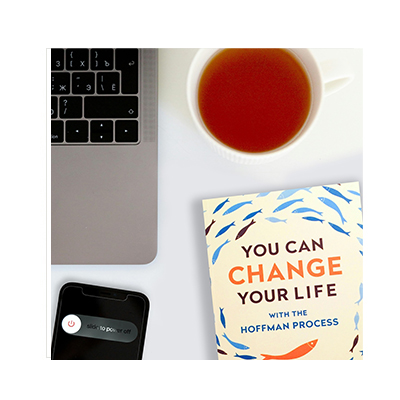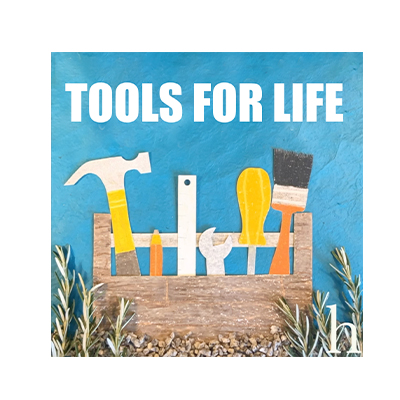 “The Hoffman Process is the most comprehensive, effective program for healing the wounds of childhood that I have yet encountered.”
“The Hoffman Process is the most comprehensive, effective program for healing the wounds of childhood that I have yet encountered.”
by Joan Borysenko Ph.D – Article courtesy of Hoffman Institute, USA
My 23-year old son Justin and I were sitting at the kitchen table late one night. Max, our Rottweiler, was curled at our feet. It was a poignant time for our family. Justin had just completed college and would be moving to the Hawaiian island of Kauai at the end of the month. His younger brother Andrei would head off to college at the same time. Their sister Natalia was about to be married, and my husband Miroslav and I were thinking about pulling up stakes and moving from Boston to Colorado. I got up to go to bed, but Justin called me back. There was an urgent tone in his voice that concerned me until I saw his shining smile. He looked deeply into my eyes. Mum, I have something really important to tell you. Are you listening – really listening? He wrapped his arms around me. I love you, he said. I forgive you and I beg for your forgiveness.
Both of us began to weep. I whispered, I love you, Justin. I love you so very much and I forgive you. We rocked slowly in each other’s arms. Then we grinned at one another and burst into a spirited chorus from Ren and Stimpy, our favorite cartoon: Happy, happy, joy, joy! Holding hands, we sang and danced around the moonlit room like a couple of kids.
Sound weird? Not if you’ve been through the Hoffman Process, which Justin and I had recently completed. Founder Bob Hoffman devised in 1967 to help people transform the patterns of emotional and spiritual suffering that they learned during childhood.
When I was an adolescent I kept a journal in which I listed all of the awful ways my mother treated me. I vowed that I would never do these things to my children. Yet when I had kids, I found myself playing out some of my mother’s most destructive patters. For example, I hated it when my mother manipulated my behaviour with guilt. Nonetheless, I grew up to be a guilt tripper myself. It drove me nuts when my mother worried over everything imaginable, from germs to finances, when everybody was in good health and the bank account was full. Nevertheless, I grew up to be what psychologist Albert Ellis calls an awfulizer.
Not my Mother
None of us is a carbon copy of Mum or Dad. Instead of adopted all their parents’ negative traits, adolescents seek their own authentic way of being. But to the degree that we feel unloved or unworthy, our uniqueness fails to flower. Since our attempts to be lovable by imitating our parents didn’t pay off, we begin to define ourselves as being not-Mum or not-Dad. I was in my 30s before I realised that a major part of my personality had developed in rebellion to my mother. I wasn’t really Joan. I was not-Lillian. For example, my mother wandered around the house like the Health Gestapo. She ogled every bite we ate, constantly felt our foreheads for fever and lurked at the bathroom door, yelling, Don’t flush! so she could examine our bowel functions. Once, when the summer air turned chilly, she called the pediatrician to ask whether my brother should be put to bed in cotton of flannel pajamas. I felt invaded by my mother. So when I grew up, thermometers became a rare commodity in my home. Whereas my mother kept me in bed for two days after cold symptoms were gone, our own kids went skiing as their noses ran. Whereas I’d had to eat Jell-O and bouillon after a stomach upset, my own kids ate whatever appealed to them.
Some of the ways I rebelled against my mother were actually helpful. She believed that emotions were a sign of weakness and that religions were so much hogwash. In fact, she expressly forbade me to study psychology or religion. I attribute my lifelong interest in psychology and spirituality directly to adolescent rebellion against these opinions. But as long as those interests were associated with the rage I felt toward my mother, they could not flower from my soul. I needed to work through the anger I felt for my mother and to move into a place of forgiveness, where I felt free from her control. With the Hoffman Process, I went beyond forgiveness to a deep compassion and respect for my parents’ struggles. I felt gratitude for how good their parenting actually had been, particularly in light of the pain they carried from their own childhood’s.
Hoffman says we’re composed of four parts: the wounded Emotional Child, the adult Intellect, the Spiritual Self and the Physical Self the body. The purpose of the Process is to encourage the wounded Emotional Child to mature into a self aware, loving, emotional adult and to re-educate the adult Intellect so that it accepts and works with the emotional self in service to the Spiritual Self. These three aspects are integrated with the Physical Self, the body, which can then express optimal health, sexuality and harmonious relationship to the natural world through the senses. My husband Miroslav was the first of our family to go through the Hoffman Process. He hoped to resolve some of his childhood pain and to develop a better relationship with his parents, himself, me and the children. I watched as Mirosh filled out a day’s worth of pre-Process forms in which he had to meticulously consider hundreds of negative traits that were potentially present in his parents. Then he had to consider which traits he had adopted and which he had rebelled against. When Mirosh came home after the Process, I expected him to be filled with the zeal of the newly converted. I steeled myself to be pleasant. But I was surprised. The post Process Mirosh had very little to say about what had gone on in the week during which three teachers and 18 students had been sequestered in a quiet hotel in Cape Cod, Mass.
His presence spoke much louder than words. He seemed more in touch with his feelings and very respectful of mine. He was more peaceful and loving. He was a much better listener. His old buttons didn’t seem to work so well anymore, and even if I started in on a jag of criticism, he didn’t get defensive. The transference from his mother to me had been erased or at least greatly reduced. He saw me as myself, not through the filter of his relationship with his mother. And he was able to cultivate a closer, more loving relationship with his parents, which is still deepening.
After witnessing the changes in Mirosh, I signed up for the Process two months later. I was hoping to drop the transference I had, which often prevented me from seeing people for who they were. I was also hoping to become more joyful, for in spite of all the healing I had already done, joy was a rare experience for me. Life seemed serious. A burden. And to tell the truth, sometimes I didn’t really enjoy being alive.
Holy Work
I went through the Process in Oakland, California, one of several sites around the country. The Oakland setting was an extraordinarily peaceful hilltop monastery. The first thing that caught my eye was a statue of the Madonna and child, but I still felt a little bit scared. I was entering this place not as the confident professional who helped other people to heal old emotional wounds, but as plain old Joan with her own wounds. I had nothing to hide behind.
I felt better as soon as I had my interview with Tim Lawrence, one of three teachers and two trainees who would work with our group of 21 students. He had read my material carefully, understood my patterns and was absolutely kind, respectful and loving, despite what he knew about me. I left that interview with the sense that I was going to be carefully, lovingly and thoroughly guided in a transformation that would leave no stone unturned or, as the Process puts it, no pattern unbusted.
When I entered the room where most of our group work would take place over the next week, I was further reassured by the presence of a young man about Justin’s age. Steve’s father had completed the Process a year before. I knew that the first two days of the Process, called prosecution of mother and prosecution of father, were an exhaustive discharge of the anger about our parents’ negative traits. Steve’s presence gave me hope that the subsequent two days called defense of parents would lead to healing; otherwise, I reasoned, he wouldn’t be there.
Just a year later, my own son would decide that he wanted to undertake the Process. I had no fear of the anger that Justin would mobilise toward me at the beginning of the week because I trusted in the transformation that he would undergo subsequently. I had a good laugh when Justin told me that he’s had to add continuation pages to the pre-Process lists of parental negative traits. I figured he was a perfectionist, a trait he had likely adopted from me! Getting in touch with the negative traits of one’s parents is a crucial part of purging those traits in ourselves. Rather than ignoring old wounds and espousing instant forgiveness – a dead end that Hoffman refers to as putting whipped cream over the garbage – each parental and personal negative trait is dealt with specifically. During the last two days of the Process, we were taught a powerful technique for neutralising our negative patterns, thus freeing up energy for more creative responses.
A crucial aspect of the Hoffman Process is the spiritual context in which the anger, forgiveness, compassion and reparenting work is done. One of the first experiences of the week, the Light Journey, in this powerful visualisation we were brought into the presence of the Light and our wise, compassionate, loving, Spiritual Self.
In that sacred context we met our wounded Emotional Child and adult Intellect, whose warring voices were immediately recognisable as the tiresome, self-depreciating, judgmental, defeatist inner dialogue that I was all too familiar with. It was obvious that their endless bickering comprised my ego, a term I am using not in the standard psychological sense, but as a description of the limited self born of Negative Love that perceives the world in terms of fear, lovelessness and scarcity. I was thrilled to realise that the constant uproar between the frightened child and the bullying ego was the source of the smoke screen that obscured the natural luminous clarity and unconditional love that is the essential core of being, the soul or Spiritual Self.
I was galvanised to pour my whole self into completing the Process, which I saw as a spiritual undertaking as well as psychological healing. Of all the spiritual growth systems I had studied over the years, nothing had given me such a strong experience of the self coupled with a very specific and straightforward process of lovingly dismantling the ego.
All of my classmates experienced the Light Journey as a spiritual homecoming, a re-awakening to their own true nature. The desire to live in the peace of core self, rather than in the ward between the wounded Emotional Child and know-it-all Intellect, infused us all with a sense of higher purpose as we went into the anger work. And we didn’t go into it alone. During the Light Journey we also met our spirit Guides. Lest you think I’ve gone off the deep end here, I can tell you this. Between my work as a medical psychologist in a hospital and as a workshop leader, I have heard from hundreds of people who say they met their spirit Guide during a near-death experience. Often these people maintain a relationship with their Guide after they have been brought back to life. Thankfully I didn’t have to die to meet my spirit Guide, with whom I have had a lively relationship since completing the Hoffman Process.
Soul Truth
I found the intense work of the Process to be a surprisingly private experience, although it was conducted for the most part in a group. At times we would complete and experience and then repair to our rooms to write in our journals, often for hours. I wrote hundreds of pages in the course of a week, coming to some amazing new understandings about myself and my parents. During the defense of parents, we did a visualisation exercise in which our 12 year old selves interviewed each parent at twelve to find out what Negative Love traits they had taken on from their parents. I had a stunning revelation about my father as a 6 year old that explained many of his fears and idiosyncrasies.
My father was one of the most loving, respectful people I have ever known, and also one of the most frightened. I beat the cushions for a long time over the fear I adopted from him, which had been so limiting in my own life. But I had no inkling of the genesis of that fear until I traveled back in time to interview him in what seemed to be a parallel reality, as real as this world.
He told me a story of being brutally assaulted by the husband of the family cook. Rather than being told the story, I experienced it as if I were in his body, living the horror moment by moment. I found myself thrashing on the bed, weeping and crying out the pain of a deeply hurt child as I relived his trauma. When it was over, I found myself back in my 12 year old role, comforting him. I felt like I had visited with my father’s soul and read what was imprinted there. Was the assault that I experienced true in the sense that it really happened? I have no way to know, since my father has been dead for 16 years, and my mother for three years. But the Hoffman staff believes that most such revelations can be corroborated. In any case, the literal truth of what I experienced doesn’t matter. As the Jungian analyst Roger Woolger puts it, such experiences in the imaginable realm have the quality of psychic or soul truth in that they explain life patterns and predispose one to psychological transformation and spiritual growth.
During the Process I felt safe and nurtured, certain that any negative traits that I failed to recognise in myself would be lovingly pointed out to me by my teachers. At no time did the work feel confrontational. Instead it felt honest, thorough and respectful. The group bonded deeply over the course of the week. And in spite of the hard work, we shared a lot of laughs and an easy camaraderie.
Nothing about our interaction escaped the eagle eyes of our teachers. Everything was grist for the mill of transformation. The use of drama and beautifully constructed ritual took the work to a very special level. Several of the rituals were so moving that I will always remember them as high points in my life.
During one I came face-to-face with the sad fact that I really didn’t care that much about living. Life seemed hard to me. I tended to suffer a lot. Through the beauty and drama of the ritual, I realised that life was a choice, and that I had free will. I chose to live. I yelled to the sky, I choose life! I want to Live! Le Chaim!
One of the most concrete changes I have experienced since I took that vow is the steady increase of joy and gratitude that began to bubble up that day. Another change is that I find it nearly impossible to blame and shame myself or anyone else. Hoffman’s motto is: Everyone’s guilty but no one’s to blame. Yes, I did adopt all those negative patterns from Mum and Dad, and I suffered for years because of them. Then I passed them onto Justin, Natalia and Andrei. I am guilty, but I’m not to blame. I was just passing the sins of my parents onto my children in the same mindless way that they have been passed on from the beginning of time.
In my own awakening and taking responsibility for living my life in a more loving, compassionate, honest and joyful way, I have become a more healing presence. I feel that I have healed my lineage both backwards and forwards in time.
Now, since he went through the Process, Justin almost seems luminous. Being around him is uplifting. He is attractive in the true sense of the word because you feel good about yourself when you are around him. This was surprising to Justin at first. He certainly expected some benefit from the Process, but had no idea of the magnitude of the change it would spur. I picture myself as a cup of love, he told me. I don’t feel pushed away or rejected anymore. I can love somebody and not care about being loved back. The feeling of love is its own reward.
I’ve noticed that Justin and I can be much more honest about our needs. We don’t do what others expect of us out of Negative Love and people pleasing. And if our behaviour is not what other people expect, we can respond with much more compassion and much less guilt. As we sat at the window, watching the rain pour off the leaves of the weeping cherry tree, Justin told me: Spirituality feels natural now, like a natural part of my being. It doesn’t come just through meditation or yoga, but in daily life.
We discussed the darkness, the self-hate that both of us had felt at times in our lives, the ways in which we had tried to avoid it, through alcohol or work or people or even meditation. I realised that I had gained five pounds since the Process, but for the first time in my life didn’t care. I felt good about myself. I felt healthy and it didn’t matter that my favorite pants no longer buttoned. Justin felt the same way about himself. Attractiveness truly isn’t physical – it reflects the fascination you feel for life and comes from within.
Woundedness to Wisdom
My children are grown up now and I am well pleased. My own wounded Emotional Child is also grown up. I have no patience with the idea that we must coddle our wounded inner child eternally, encouraging its whining and enabling our feelings of victimisation to persist. It is never too late to grow up. And there is always time to be a better parent.
During the last exercise of the Process, called Closure, I experienced how love and healing reach through time and space to our entire family – past, present and future. As we mentally cut the cords of Negative Love, I could feel the healing moving backwards in time, to my ancestors and all my relations.
When Justin went through Closure, I felt myself on the receiving end of the healing he sent out to his own lineage. The week of Justin’s Process I tried to focus mentally on what he was likely to be doing, but on the seventh night, during Closure, I was busy preparing dinner. Suddenly I looked at Mirosh and felt an overwhelming outpouring of love for him. He seemed so precious. Every hair on his head seemed familiar and beloved. Gratitude for our 21 year marriage flooded through me and I began to weep for joy. The dog and two cats were gathered around, and the outpouring of love flowed to them and from them. I felt connected to everything and began to undergo a dramatic shift in perception. Everything seemed shimmering and luminous. I couldn’t tell where I ended and other things began.
When Justin and I spoke later, he told me that he’d had a particularly powerful experience of me in his visualisation. Our shared experience echoed the powerful teachings of the 27th generation Cherokee medicine woman and Tibetan Buddhist teacher Dhyani Y Wahoo. She reminds us that every act of healing is an act of service that we undertake not only for ourselves for our family, clan, nation and all beings.
I’ve always felt that at its heart healing is the simplest of matters, because we are already whole. Regardless of the experiences we have in this lifetime, despite the wounds we give and receive in the ultimate service of growing in wisdom and compassion, our souls never cease to shine. The Tibetan Buddhists compare our Spiritual Self, what they call our own true nature, or rigpa, to a mirror. It reflects the drama, but is itself changeless. Healing is about parting the clouds that obscure the mirror-like-perfection that we are. In the Process, we become alchemists who transmute woundedness into wisdom. And this work we can do in many ways. Through therapy, 12 step programs, dreams, meditation and grace. The path for each of us is different. But when we are ready to heal the right path will open. For our family, the Hoffman Process was an important opening at the right time in our lives.
Joan Borysenko, Ph.D., is co-founder of the Harvard Mind-Body Clinic, and author of the best selling “Guilt is the Teacher, Love is the Lesson”, and “Minding the Body, Mending the Mind”. and “Fire in the Soul: A New Psychology of Spiritual Optimism” (Warner Books, 1993).
[Credit: Joan Borysenko]
–Hoffman Institute, USA





 Sign up to receive monthly newsletters from Hoffman
Sign up to receive monthly newsletters from Hoffman